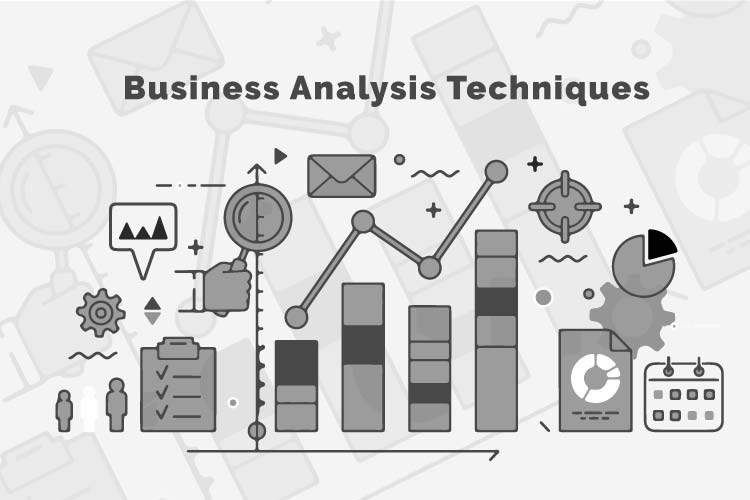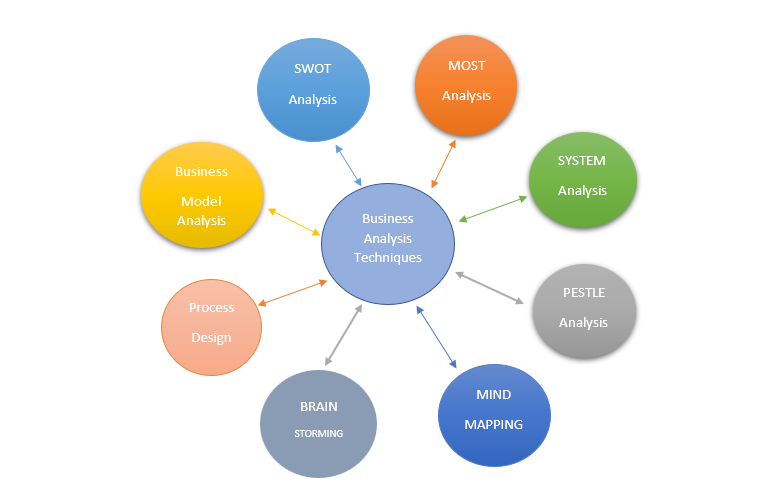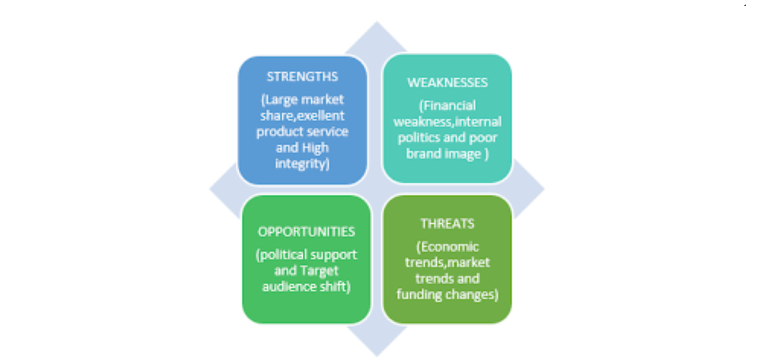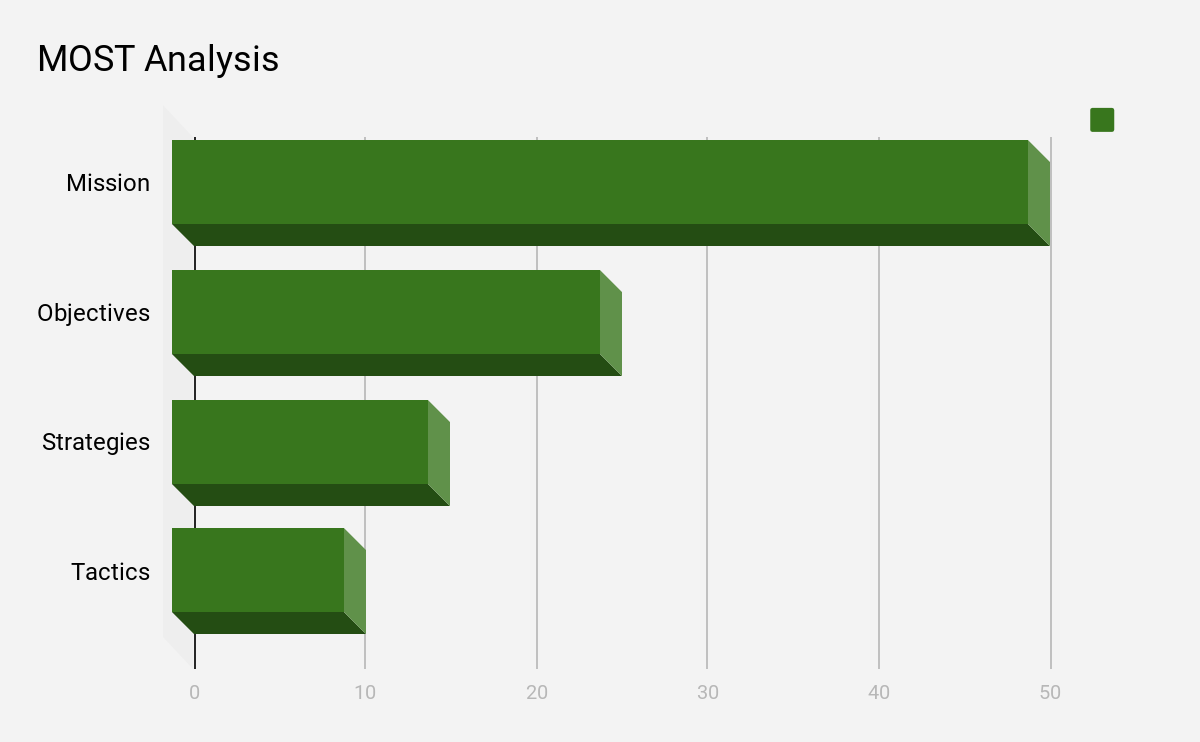- Category
- >Business Analytics
8 Most Popular Business Analysis Techniques used by Business Analyst
- Dinesh Kumawat
- Aug 07, 2019
- Updated on: Nov 15, 2024

Business Analyst is a person who analyses, understands and ensures the requirements for the business growth by reforming its policies, internal process, and information system completely.
The business analyst makes positive changes by understanding the business problems, recommends the solution and increases the return on investment for projects. It will help to modify the processes, products, services, and software in order to achieve the company's goals.
“Business analyst is a kind of an overpass between the business-related problems and technology solutions.”

Various business analysis techniques
Business analysis is the task full of ideas, knowledge, and information required to recognize business needs and solutions. Business solutions directly related to business requirements such as what are user requirements, attributes, utility and resources of requirements, etc. for all these business problems different business techniques come into existence.
Techniques of Business Analysis
To analyze business needs, goals or objectives suitable technique plays a vital role. There are many business analysis techniques used by the Business Analyst. We have described the eight most popular techniques below.
1. SWOT Analysis
S.W.O.T. stands for Strength, Weakness, Opportunities, and Threats. This is the most important technique used in business analysis. It is conducted by a group of people with different mindsets and perspectives in the company in order to access a changing environment and react accordingly.
It is kind of the business framework in which strengths and weaknesses are internal data factors whereas opportunities and threats are the external data factors.
Strength of the company can be classified as the actions that work well for different problems and confers the key advantages to the company. Some examples of strengths are the company name, company location, trusted employees, great reputation, customer support, brand name, product, etc.
Weakness of the company is the different activities or disadvantages which create problems for the growth or policies of the company. Examples of weaknesses are bad reputation, incomplete product, lazy employees, department rivalry, persistent negativity, office politics, etc.

SWOT Analysis of an IT Company
Opportunities are external facts and figures which have the potential to provide an advantage or an edge above competitors. Any kind of advantage due to external facts is an opportunity.
Some examples of opportunities are investing in the startup at an early edge to gain more profit later. One of the classic examples of opportunity in Indian startup is that after demonetization many digital payment startups (an example of digital transformation) got millions of funding.
Threats are also an external fact or information that can create a disadvantage to the company. Some of the examples of threats are changes in market research and trends, new regulations, new technology such as AI and IoT implementation in touch screen mobile phones that were perhaps a threat to keypad phones, an example of cyberthreats.
2. MOST Analysis
M.O.S.T. stands for Mission, Objective, Strategy, and Tactics. MOST analysis is also a powerful technique to do business analysis. MOST analysis always works from the top. Business Analyst should ensure that it retains the focus towards goals which are most important for the organization.
It gives a better understanding of the organization’s capabilities and vision (purpose) and to provide answers to the interrogation such as what does the organization wants to achieve in terms of mission and objectives, how these actions can be implemented in strategies and tactics.
Mission should be an organization’s enduring process. Each department of the organization equally contributes to the mission statement. It clears an overall reason for being in business and what will be the outcomes to accomplish. The more clear the business is about its mission, the more likely it will succeed.
Objectives are the one step down after mission. These are defined as specific aims for each department to achieve its mission. Objectives should be smart and specific for decision making. They should also be measurable and realistic.

Importance of MOST analysis
Strategies are the actions that should be taken in order to accomplish organizational objectives. These are the long term approach to achieve objectives. There are many groups of sorts of actions to achieve at least one goal of objectives of the mission. Strategies are also considered as the safest way to move forward in the organization.
Tactics are designed to carry out strategies in the organization. They are formed in a simple manner so that they can be understood by every person in the organization who does not have an overview of MOST analysis. These are short term approach to complete strategies.
3. PESTLE Analysis
In any organization, there are many external macro-environmental factors that can affect its performance. PESTLE analysis is sometimes also referred to as the PEST analysis and has used in various business applications.
PESTLE stands for Political, Economical, Social, Technological, Legal and Environmental. These forces or factors can create opportunities or threats to any organization so it is a very powerful tool or technique of business analysis.
Political factors determine how a government’s policies and regulation act influence an organization. It is also related to the government’s intervention in the economy. All the factors that influence business by the government can be classified here such as tax policies, tariffs, law, trade control, import restrictions, etc.
Economical factors have a significant impact on how do organizations run their business and how profitable business is. Economic factors include economic growth, exchange rate, inflation rate and interest rate.
Social factors include health consciousness, population growth rate, age distribution, cultural trends etc. These factors help marketers to understand their customer’s requirements.
PESTEL analysis
Technological factors include the rate of technology advancements, innovation, automation, research and development which might impact business growth.
Legal factors include the discrimination laws, copyright/patent laws, data privacy laws, health and insurance laws, etc. The organization must run within its legal boundaries.
Environmental factors include weather, climate change, air and water pollution, etc. These factors especially impact many industries such as tourism, farming, insurance, etc.
4. System Analysis
System analysis is a systematic problem-solving method for collecting and interpreting facts, looking system’s weaknesses, identify business problems, or decomposition of the system into smaller parts. It is an approach to minimize the error of different issues.
System analysis is the process of studying the company’s perspective, identifying its goals, creating a process together to make an efficient system. For instance, a problem can be solved in a few hours without analyzing a system completely but sometimes it creates many other irrelevant issues. So, the better you understand the system, chances are less for any problem to arise.
5. Business Model Analysis
The business model analysis helps us to understand the business of the company and clears the policies, market approaches, and techniques. It gives a better understanding of many things like revenue model, value offering to which customer’s segment, cost involved in value offering, effects on the company if the business model changes.
In the Business model analysis, we also try to grasp the insight on the important factors such as cost of production, marketing, and management. With the complete study of design, production cost, marketing strategy, and effect on possible upcoming changes, A business analyst ensures the growth of company status and revenue.
6. Brainstorming
Brainstorming is a useful technique to generate diverse ideas, to resolve or find a solution for the complex problems and to analyze business properly.
It is defined as “a group problem-solving technique that involves the spontaneous contribution of ideas from all members of the group.” In brainstorming, each idea of an individual person whether it is out of the box idea is encouraged.
Brainstorming done by one person only could be considered as independent brainstorming, some business analysts might advocate for this type of brainstorming because it would take less time to achieve a conclusion, but in the large organization, group brainstorming is practiced.
Brainstorming targets creative thinking about a problem in order to come up with a new set of ideas, approaches, and options. It is a group activity having a completely different purpose of generating solutions for the problems.
7. Mind Mapping
Mind Mapping is a very useful and effective business analysis technique that gives us a clear and visual understanding of different problems, ideas, thoughts, etc.
Structure of Mind Mapping is very similar to the structure of neurons in the brain (one of the prominent reasons why it is called so), It keeps expanding with the addition of new ideas and resources.
A Business Analyst’s role is to investigate and evaluate problems obtained by clients or stakeholders that can be solved by using mind maps to get structured details of any ideas, thoughts, and information.
The mind mapping technique ensures that all the factors which are needed to analyze have been considered or not. There are several tools available to make mind maps online such as Freemind, Xmind, Mindmap, Lucidchart, Canva, etc.
8. Process Design
This is a crucial part of the business analysis where a Business Analyst identifies the organization’s process designs and their useful and harmful attributes.
Process designs are essential to solve the problems and exploiting opportunities in order to monitor and measure the effectiveness of business to ensure consistent value delivery to consumers. Process designs can also be described as a future state of any business operations.
A Business process analyst analyzes the existing process design and does changes if required. The business analyst is responsible for understanding the wide business process improvement and maintain them.
Conclusion
There are many techniques available for business analysis. In this blog, the importance of business analysis along with different techniques discussed. The role of the Business Analyst not only limited to analyze the data available but also to enhance the business up to the next level. He chooses the appropriate technique according to business problems and takes necessary actions for improvement.
Business analysis is a great way to understand any business as it can give you a clear understanding of the business process, targeted customer segment, market, value system, future state, policies, capabilities, and competitors. Thank You!
Trending blogs
5 Factors Influencing Consumer Behavior
READ MOREElasticity of Demand and its Types
READ MOREAn Overview of Descriptive Analysis
READ MOREWhat is PESTLE Analysis? Everything you need to know about it
READ MOREWhat is Managerial Economics? Definition, Types, Nature, Principles, and Scope
READ MORE5 Factors Affecting the Price Elasticity of Demand (PED)
READ MORE6 Major Branches of Artificial Intelligence (AI)
READ MOREScope of Managerial Economics
READ MOREDifferent Types of Research Methods
READ MOREDijkstra’s Algorithm: The Shortest Path Algorithm
READ MORE

Latest Comments
kristenstephen26e993e57c55c547ea
Jan 04, 2025Anyone who has fallen victim to Any recent or old fraudulent Crypto investment schemes should reach out to THE SCHWARTZ RECOVERY SOFTWARE HACKERS COMPANY Haven’t you heard about Schwartz Software Hackers Services the deal in Fund Recovery and Mobile spy and other people had benefited from it? I am KRISTEN STEPHEN by name, I want to share a blog and forums on how to get a real fund recovery firm, thanks to Schwartz Software Hackers who helped me in recovering my funds from a romance scam and I was so poor without funds that I got frustrated. One morning as I was browsing the internet, I saw different comments of people testifying of how Schwartz Software Hackers helped him from being poor to a rich man through this already hacked ATM CARD. I was skeptical if this was true, I decided to contact him to know if he is real he proved to me beyond all doubts that it was really for real so I urgently receive my lost funds with the help of him you can Contact his email schwartzsoftwarehackingprogram@gmail.com and today am also testifying on how SCHWARTZ RECOVERY HACKERS helped me. I never believed in it until the funds were recovered and sent to my bitcoin wallet, which I have my funds back and am grateful to them, Contact the company now and recover all your lost funds WhatsApp📞 : +44 77 41 26 48 51 Email : schwartzsoftwarehackingprogram@gmail.com Telegram : https://t.me/schwartzsoftwarehackers Website : https://schwartzsoftwareha.wixsite.com All rights reserved. Copyright© 2021 Privacy Policy.
kristenstephen26e993e57c55c547ea
Jan 04, 2025Anyone who has fallen victim to Any recent or old fraudulent Crypto investment schemes should reach out to THE SCHWARTZ RECOVERY SOFTWARE HACKERS COMPANY Haven’t you heard about Schwartz Software Hackers Services the deal in Fund Recovery and Mobile spy and other people had benefited from it? I am KRISTEN STEPHEN by name, I want to share a blog and forums on how to get a real fund recovery firm, thanks to Schwartz Software Hackers who helped me in recovering my funds from a romance scam and I was so poor without funds that I got frustrated. One morning as I was browsing the internet, I saw different comments of people testifying of how Schwartz Software Hackers helped him from being poor to a rich man through this already hacked ATM CARD. I was skeptical if this was true, I decided to contact him to know if he is real he proved to me beyond all doubts that it was really for real so I urgently receive my lost funds with the help of him you can Contact his email schwartzsoftwarehackingprogram@gmail.com and today am also testifying on how SCHWARTZ RECOVERY HACKERS helped me. I never believed in it until the funds were recovered and sent to my bitcoin wallet, which I have my funds back and am grateful to them, Contact the company now and recover all your lost funds WhatsApp📞 : +44 77 41 26 48 51 Email : schwartzsoftwarehackingprogram@gmail.com Telegram : https://t.me/schwartzsoftwarehackers Website : https://schwartzsoftwareha.wixsite.com All rights reserved. Copyright© 2021 Privacy Policy.
sqarec283b3f3bdfb44457
Feb 24, 2025I will say this here for everyone and anyone looking to get back lost asset out from cryptocurrency, let the best recovery expert handle your case , invariable no matter how long you've struggled with a scam incident , talk to REPORT CYBER HUNTER (@) GMAIL COM they handle all kinds of assets recovery and if your case is impossible to recover they will tell you , mind you they are the best team for the job , here is there contact info--what app +1(541)901-3390. OR email--Report Cyber Hunters (@)G mail .com today. I will be here to hear your feedback.
sqarec283b3f3bdfb44457
Feb 24, 2025I will say this here for everyone and anyone looking to get back lost asset out from cryptocurrency, let the best recovery expert handle your case , invariable no matter how long you've struggled with a scam incident , talk to REPORT CYBER HUNTER (@) GMAIL COM they handle all kinds of assets recovery and if your case is impossible to recover they will tell you , mind you they are the best team for the job , here is there contact info--what app +1(541)901-3390. OR email--Report Cyber Hunters (@)G mail .com today. I will be here to hear your feedback. I will say this here for everyone and anyone looking to get back lost asset out from cryptocurrency, let the best recovery expert handle your case , invariable no matter how long you've struggled with a scam incident , talk to REPORT CYBER HUNTER (@) GMAIL COM they handle all kinds of assets recovery and if your case is impossible to recover they will tell you , mind you they are the best team for the job , here is there contact info--what app +1(541)901-3390. OR email--Report Cyber Hunters (@)G mail .com today. I will be here to hear your feedback.
sqarec283b3f3bdfb44457
Feb 24, 2025TO HIRE A FAST ETHICAL HACKER TODAY --Talk to REPORT CYBER HUNTERS (@)GMAILCOM , let them take up your case , trace and track the real scammer behind all your lost and if possible help you regain back your funds ,it has worked for me and i'm here to tell you to do exactly the same thing and expect a positive result, if possible they will either fly or drive down to your location and have an interview with you and through their sophisticated hackers they will eventually caught whoever has been scamming you , here is there what's app number +1(5411)901-3390.or email REPORT CYBER HUNTERS (@) GMAILCOM. THANK ME LATER OK.
SUE THOMPSON
Feb 24, 2025IF you are a victim to a scam no matter how long it has happened, with due diligence e mail--{Report cyber hunters AT Gmail dot com} or WhatsApp-- + (1) 541 9013 390. they are available to take up your case and get you an expected outcome. Thank me later
seanhoar77658981a9ce9e4b81
Apr 09, 2025Are you tired of struggling with credit report issues? I was too—until I found Pinnacle Credit Specialist. I had an eviction on my credit report and a low FICO score of 550, which held me back for years. Then I came across a Google forum filled with testimonials about Pinnacle Credit Specialist. Skeptical at first, I decided to reach out—and it turned out to be a game-changer. They raised my FICO score to an excellent 816 and successfully removed the eviction from my report. Affordable, reliable, and always ready to assist, Pinnacle Credit Specialist truly delivered. Contact them at PINNACLECREDITSPECIALIST@GMAIL.COM or text (409) 331-2269. Their office is located at 12400 La Guardia Ln, Del Valle, Texas. Book an appointment today, and don’t forget to mention I referred you!
terryalan789949c517df1aa4130
Apr 15, 2025Hello, I lost about $325,000 USDT to a fake Bit-by-bit trading platform few weeks back after I got lured into the trading platform with an intent of earning 10% profit daily trading on the platform. This period was a hell of a time for me as I could hardly pay my bills and get my feeding routine done. I had to confide in my close friend who then introduced me to this crypto recovery team with the best recovery software at WIZARD JAMES RECOVERY. I contacted them and they were able to completely recover my stolen digital assets with ease. It was indeed an amazing service, this will forever be the best service I got on the internet. I strongly recommend this team to anyone going through similar situation with their investment or fund theft to speedily lookup to this team for the best appropriate solution so as to avoid getting lured by other fake recovery agents. Send your complaint now!!! Contact info: ( WizardJamesRecovery@qualityservice.com ) WhatsApp Number: (+1 234) 389-4661
aaronclerk001d6d984c683ee4c38
Jul 10, 2025Holy crap, I went to check my credit score today via Experian and myFICO, finally 811. My wife and I are impressed with the services of PINNACLE CREDIT SPECIALIST. Although I don’t expect this to last too long (I’m buying a house) it is something that I’m proud of. I don’t want this to come off as bragging, I only bring it up because if anyone has any questions about how I build my credit or the different aspects of my score I’m more than willing to help others. You can hit them up by email: PINNACLECREDITSPECIALIST@GMAIL.COM or call +1 (409) 331 2269. Don’t fail to let him know Aaron referred you to him.
donaldspringer85879336ef456e64e48
Jul 13, 2025Hello, so I’ve been trying to rebuild my credit. On May 18th I paid off a capital one card and my TransUnion vantage score dropped 35 points to 548. Didn’t see an increase. The next week I paid off another card (fortiva) and I saw my Equifax score drop 40 points down to 538. I’m using credit karma and when I’ve seen those drops, under recent activity is where it shows the CC balance decreased. 5 total credit cards. 2 paid off and 3 at 100% utilization. I do have 3 collections on file and chapter 7 BK. Last collection I’ve paid off with deletion, the score didn’t move yet my cards are dropping my scores. Does this make sense? This really frustrated me. I worked my butt off and even though I’m making progress in paying off the debt, it doesn’t seem it is benefiting my score. In contrast I read about PINNACLE CREDIT SPECIALIST on Quora and Medium and I didn’t hesitate to contact him, to my greatest surprise, when I logged into Credit Karma this morning and it stated that a public record has been removed. I found it strange, so I looked further, and it was indeed my Chapter 7 BK that had been removed. I did not argue. It was just removed from TransUnion by Pinnacle Credit Specialist. My credit score has been increased to 800+ across the three credit bureaus. This is what I can only describe as a Miracle! All thanks to Pinnacle Credit Specialist, the savior I met last month. You can reach out to him by email: PINNACLECREDITSPECIALIST@GMAIL.COM or call +1 (409) 331-2269. UPDATE: I just checked myFICO TransUnion and the bankruptcy is completely removed.